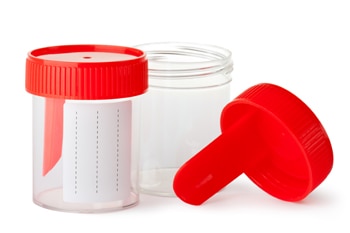Diagnosis of Kidney Infection (Pyelonephritis)
How do health care professionals diagnose a kidney infection?
Health care professionals use your medical history, a physical exam, and lab and imaging tests to diagnose a kidney infection. Your health care professional will ask if you have a history of health conditions that make you more likely to develop a kidney infection.
During a physical exam, your health care professional will ask about your symptoms. If you are male, your exams may include a digital rectal examination (DRE). During a DRE, your health care professional will check for a swollen or enlarged prostate. An enlarged prostate can lead to a urinary tract infection.
What tests do doctors use to diagnose a kidney infection?
Health care professionals may use urinalysis, urine culture, and imaging tests to diagnose a kidney infection.
Lab tests
Urinalysis
 You may be given a collection cup to provide a urine sample for lab tests.
You may be given a collection cup to provide a urine sample for lab tests.
Urinalysis checks your urine sample for blood in the urine and white blood cells. Your body produces white blood cells when it is fighting an infection caused by bacteria.
Urine culture
Urine culture identifies some common types of bacteria in your urine. This test may help to see whether antibiotics are a treatment option. You will typically get your test results in a few days.
Blood tests
Blood tests look for serious infections, such as kidney infections. Blood tests may also show how well your kidneys are working.
Imaging tests
Your health care professional may use one or more of the imaging tests below to help diagnose a kidney infection
- computed tomography (CT) scan, which uses x-rays and computer technology to create images of your body’s internal organs
- magnetic resonance imaging (MRI), which takes pictures of your body’s internal organs and soft tissues without using x-rays
- radionuclide scan, which uses a small amount of radioactive material and computer technology to see how your organs are working
- ultrasound, which uses sound waves to create an image of your organs
This content is provided as a service of the National Institute of Diabetes and Digestive and Kidney Diseases
(NIDDK), part of the National Institutes of Health. NIDDK translates and disseminates research findings to increase knowledge and understanding about health and disease among patients, health professionals, and the public. Content produced by NIDDK is carefully reviewed by NIDDK scientists and other experts.

